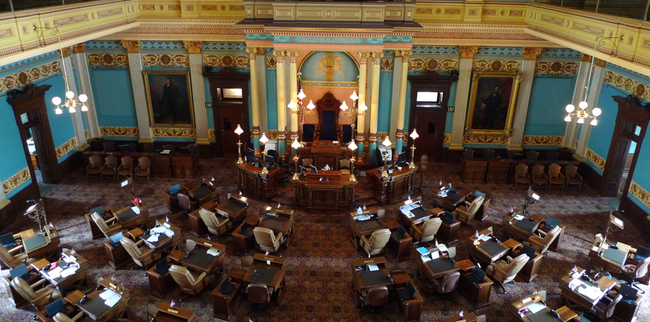Study to measure cost of education unlikely in election year
With stark divisions in Michigan over how to best fund public schools, one solution adopted by most states is to fund an “adequacy study.” Such studies are intended to determine how much it costs per pupil to offer all students a quality education.
For now, however, funding an adequacy study in Michigan appears to be a political non-starter this election year. Such studies tend to be supported by Democrats and education groups, and opposed by Republicans, who contend the studies invariably conclude that states need to spend more on education.
House Bill 5269, widely backed by Democrats, calls for an adequacy study to determine the cost per pupil to provide an education that would enable a student to meet state standards on the high school Michigan Merit Exam, which includes the ACT college entrance test.
The bill languished in the House education committee until sponsors pushed to get it discharged. It was referred back to the education committee last month. There it sits, with no support from Republicans such as Rep. Bill Rogers, a key voice on school aid.
When Rogers was first elected in 2008, he asked the very question that would seem to be addressed by an adequacy study: How much does it cost to educate a child in Michigan? He said he is still waiting for an answer.
But that doesn’t mean the state should approve the adequacy study bill and have to pony up money to pay for data collection, he said. Rogers said the Legislature should be able to get that answer from Michigan educators.
“Why do I want to pay for a study from outsiders when the information could be there right at the ready at the schools?” Rogers said.
Experts estimate such studies have cost other states from $500,000 to $1 million to carry out.
Rogers argues that term limits, not the absence of an adequacy study, probably present the biggest political barrier to reforming school funding in Michigan. The proposed 2015 school aid budget is the fourth one Rogers has worked on as chair of the House appropriations subcommittee on school aid, making him the longest-serving lawmaker to serve in that capacity. Term limits prevent him from running again this fall, so his replacement will have to tackle the issues.
“Election year, people get a little tentative on both sides of the aisle,” Rogers said. “It takes a while to get to the longer-term, real fixes. It’s not from lack of effort. As soon as you understand things, you’re gone and it starts all over.”
Michigan Education Watch
Michigan Education Watch is made possible by generous financial support from:
Subscribe to Michigan Education Watch
See what new members are saying about why they donated to Bridge Michigan:
- “In order for this information to be accurate and unbiased it must be underwritten by its readers, not by special interests.” - Larry S.
- “Not many other media sources report on the topics Bridge does.” - Susan B.
- “Your journalism is outstanding and rare these days.” - Mark S.
If you want to ensure the future of nonpartisan, nonprofit Michigan journalism, please become a member today. You, too, will be asked why you donated and maybe we'll feature your quote next time!


 Election years always make legislators leery. The chances of a school-funding adequacy study being funded this year are thin. (Bridge file photo)
Election years always make legislators leery. The chances of a school-funding adequacy study being funded this year are thin. (Bridge file photo)
